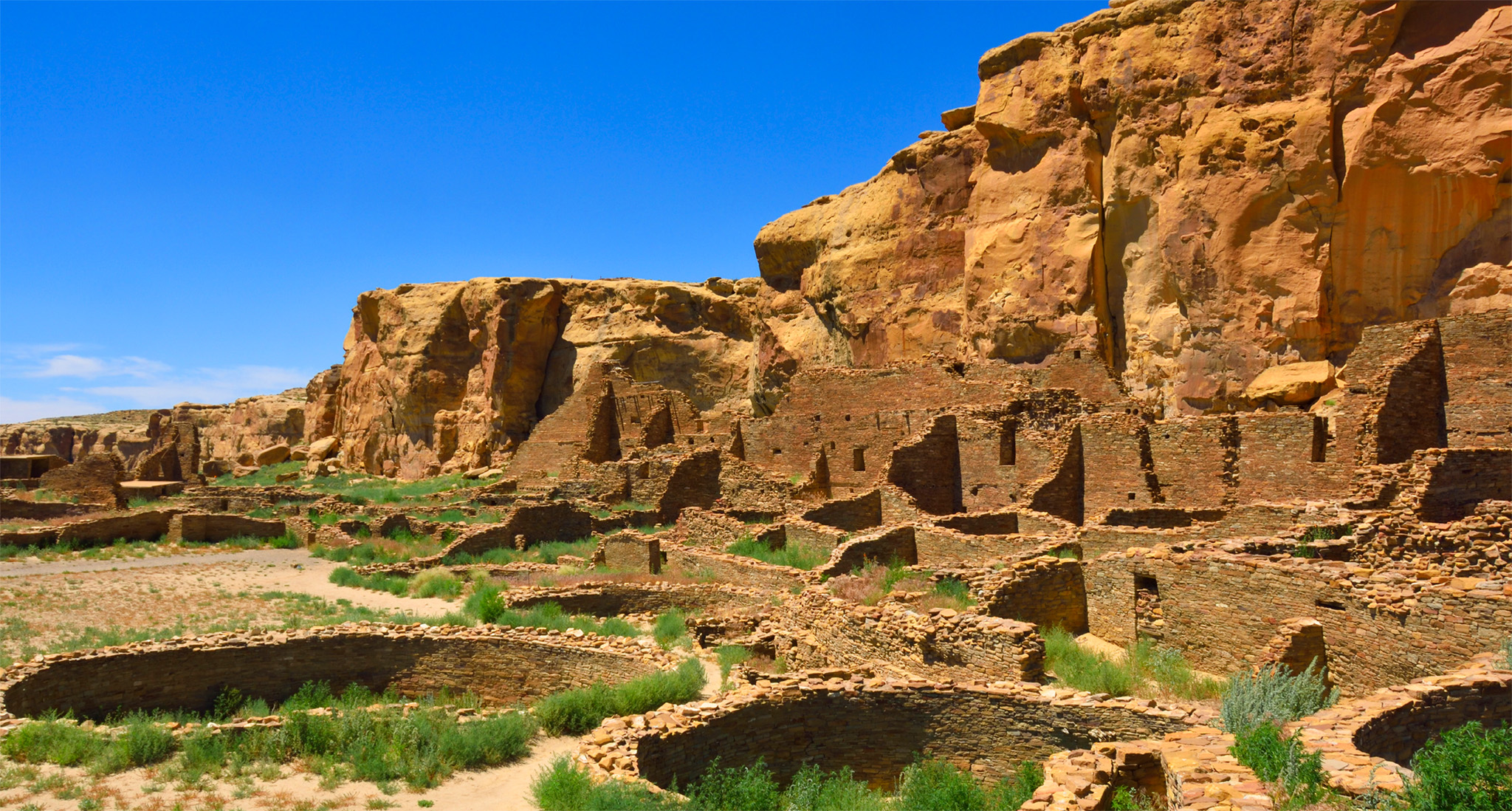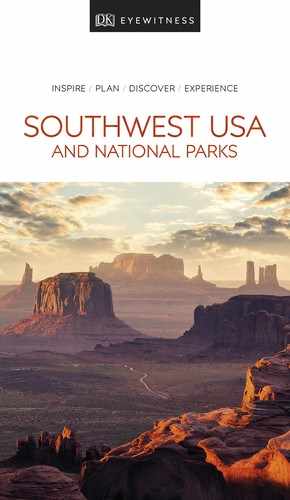One of the most impressive cultural sites in the Southwest, Chaco Canyon has well-preserved ruins comprising the largest and most complex pre-Columbian buildings in North America. A UNESCO World Heritage Site, these ruins are considered sacred by the Hopi and Pueblo peoples.

t Pueblo Bonito, the largest and most famous "great house" in Chaco
Experience The Four Corners

t Reconstruction of the Pueblo Bonito, showing how it might have looked
The ruins in Chaco Canyon reflect the sophisticated architectural and organizational skills of the Ancestral Puebloan civilization that existed here between AD 850 and 1250. With its 16 “great houses” (pueblos containing hundreds of rooms) and many lesser sites, the canyon was the political, religious, and cultural center for settlements that covered much of the Four Corners.
At its peak during the 11th century, Chaco was one of the most important pre-Columbian cities in North America. Despite the site’s size, it is thought that Chaco’s population was small because the land could not have supported a large community. Archaeologists believe that the city was mainly used as a ceremonial gathering place, with a year-round population of less than 3,000. Probably the social elite, the inhabitants supported themselves largely by trading. A turquoise-processing and bead-making industry flourished in the canyon. The many kivas (round, ceremonial chambers) also suggest its nature as a gathering place.
The largest "great house" was Pueblo Bonito, with more than 600 rooms. Other ruins include Chetro Ketl, with more than 500 rooms, and Casa Rinconada, a great kiva, which was the largest religious chamber at Chaco.
Did You Know?
Around 200,000 pieces of turquoise have been found among the ruins.
Petroglyphs
Intriguing petroglyphs (carvings) and a number of pictographs (painted rock art) can be seen along several hiking trails. Some show figures of the sun and moon in alignment, suggesting that the Chacoans practiced archaeoastronomy. Others show human, animal, and super-natural figures. An easy place to see them is along the Petroglyph Trail, which runs along the cliff face between Pueblo Bonito and Chetro Ketl, or along the trail to Una Vida.
Exploring Chaco Culture National Historical Park
The site is accessed via a 13-mile (21-km) dirt road that is affected by flash floods in wet weather. Inside the park, you can follow the 9-mile (15-km) paved Canyon Loop Drive that passes several of Chaco’s highlights. There is parking at all major sites. From the visitor center, a trail leads to Una Vida and the petroglyphs. Pueblo Bonito is the must-see site in the canyon; buy a trail guide which points out key features of Chacoan great house architecture. There are four hiking trails, ranging from 3 miles (5 km) to 8 miles (13 km) for a round trip. They take you through the backcountry to more remote Chacoan sites, with wonderful views of the mesa landscape along the way. Be sure to get a free backcountry hiking permit from the visitor center. Biking the Canyon Loop Drive is another great way to visit the sites.
Did You Know?
An International Dark Sky Park, Chaco is one of the best places in the US for star gazing.

Insider Tip
Tours
Guided tours of the "great house" sites take place May through October, and sometimes in April. Ask at the visitor center. Night Sky pro-grams run Friday and Saturday evenings April through October.
